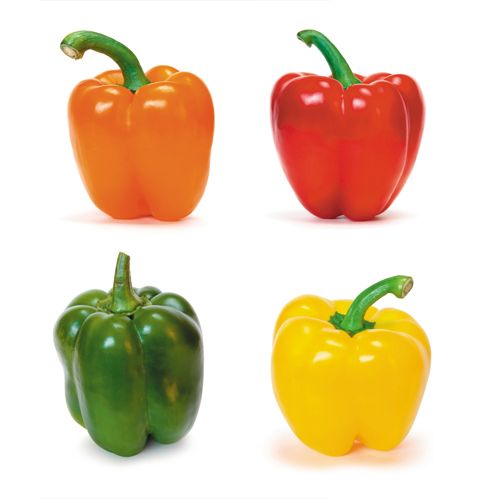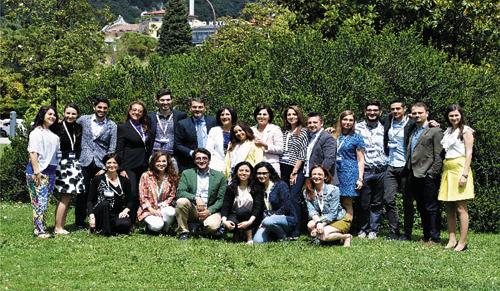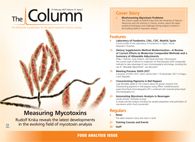Characterizing Pigments in Bell Peppers
Luigi Mondello spoke to The Column about his group’s research into characterizing pigments in bell peppers using offline multidimensional supercritical fluid chromatography (SFC) combined with reversed-phase liquid chromatography (LC).
Photo Credit: topseller/Shutterstock.com

Luigi Mondello spoke to The Column about his group’s research into characterizing pigments in bell peppers using offline multidimensional supercritical fluid chromatography (SFC) combined with reversed-phase liquid chromatography (LC). - Interview by Kate Mosford
Q. What led your group to characterize pigments in bell peppers using offline multidimensional supercritical fluid chromatography (SFC) combined with reversed-phase liquid chromatography (LC) (1)?
Luigi Mondello: The reason for this choice lies in the very complex pigment composition in sweet bell peppers, which gave numerous overlapping and coeluting peaks in the conventional one-dimensional (1D) reversed-phase liquid chromatography (LC) analysis. Our primary aim was to look for a fast, solvent-free method to separate pigments in our matrices. With this in mind, the SFC approach was investigated to prove its separation power, robustness, and ease-of-use. By coupling offline SFC and LC for a multidimensional separation of complex samples, a larger fraction of the separation space is produced. The SFC fractions were not subject to any further manipulation before the successive conventional LC analysis. The separation mechanisms observed by the two techniques were almost orthogonal, as can be expected with the coupling of normal phase (NP) and reversed phase separation modes, allowing a very detailed identification of the native (unsaponified) carotenoids and chlorophylls present in green, yellow, and red bell peppers. The peak capacity of the offline multidimensional SFC reversed-phase LC separation was estimated as roughly 1900 versus 186 of the 1D analysis on the C30 column. The offline multidimensional SFC reversed-phase LC approach allowed the detection of a total of 115 pigment compounds.
Q. What can multidimensional chromatography offer that a oneâdimensional LC approach cannot?
LM: The separation power of conventional one-dimensional LC is sometimes not enough to analyze complex natural matrices and a pre-separation is necessary to avoid peak overlaps. To achieve better chromatographic separations and greater information on a complex matrix composition, the use of powerful analytical tools is required. Multidimensional LC techniques are relatively novel approaches, coupling two independent LC separation processes with orthogonal selectivities that may offer the required analytical advantages, and displaying a much higher peak capacity compared to the oneâdimensional approach. In this specific method, the SFC pre-separation was useful to reduce the fraction complexity, leading to a more feasible determination of the single components.
Q. Why is studying this pigment fraction within bell peppers important?
LM: The pigment composition of sweet bell peppers has been investigated much less compared with chili peppers. Sweet bell peppers are a very commonly consumed type of vegetable and the knowledge on their pigment composition can be important from a nutritional point of view; numerous beneficial health properties have been attributed to some of the pigments. Moreover, the study of the carotenoid stability and composition in overripe yellow and red bell peppers collected directly from the plant also allowed the possible carotenoid degradation in the non-climacteric investigated fruits to be evaluated for the first time. Nowadays overripe fruits are considered a cheap source of valuable components because existing technologies can recover target components, thereby allowing their recycling inside the food chain as functional additives in different products.
Q. Were there any surprises that you did not expect during the analysis?
LM: The offline approach indeed provided a very high separation power and, in comparison with the previous work on sweet bell peppers (2), numerous new pigments could be identified and quantified in green and yellow peppers for the first time. For example, among pigments, 23 xanthophyll esters were identified for the first time in yellow pepper. The results are a good picture of the real pigments and of their variation during ripening.
Q. Can this approach be applied to other foods or other areas of food analysis?
LM: Yes, the same approach can be applied to any other fruit or vegetable.
Q. What are you working on next?
LM: We are continuing to investigate the pigments and pigment derivatives composition in various matrices, including tropical fruits and food-related bacteria. Our approach will continue to be mainly multidimensional with, where possible, a greater use of supercritical fluid chromatography for a faster and greener approach.
References
- L. Mondello et al., J. Sep. Sci.39, 3281–3291 (2016).
- D. Giuffrida et al., Nat. Prod. Comm. 6, 1817–1820 (2011).

Luigi Mondello is Full Professor of Analytical Chemistry at the University of Messina, Italy. His research interests include chromatographic techniques, hyphenation to mass spectrometry, and multidimensional chromatographic approaches for the study of complex real-world samples.

Characterizing Plant Polysaccharides Using Size-Exclusion Chromatography
April 4th 2025With green chemistry becoming more standardized, Leena Pitkänen of Aalto University analyzed how useful size-exclusion chromatography (SEC) and asymmetric flow field-flow fractionation (AF4) could be in characterizing plant polysaccharides.
Investigating the Protective Effects of Frankincense Oil on Wound Healing with GC–MS
April 2nd 2025Frankincense essential oil is known for its anti-inflammatory, antioxidant, and therapeutic properties. A recent study investigated the protective effects of the oil in an excision wound model in rats, focusing on oxidative stress reduction, inflammatory cytokine modulation, and caspase-3 regulation; chemical composition of the oil was analyzed using gas chromatography–mass spectrometry (GC–MS).












